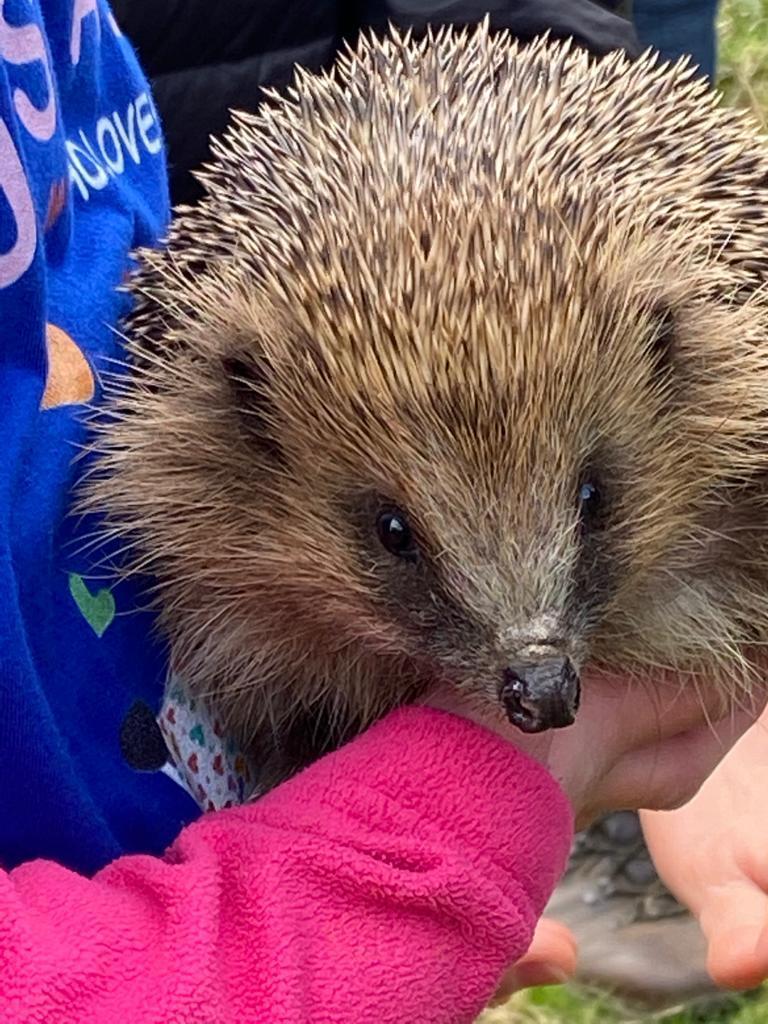
In recognition of Hedgehog Awareness Week - which runs from 2nd May to the 8th May - we've compiled some useful information about these little mammals, along with a local rehabilitation project!
The name hedgehog (Erinaceus europaeus) came into being in the 1450 and is derived from heyg or hegge meaning hedge, and hoge or hogge meaning hog because of its long twitchy snout. They are common across Europe.
These beautiful spiny creatures are small and round with short legs and are known to be plantigrade, which means it walks on the soles of its feet like you or me. They normally scurry around at night time looking to snaffle beetles, worms, caterpillars, and slugs.
In the spring they wake up from their winter nest or hibernaculum. When they are ready the females raise litters of 4-5 young hoglets from April to September, according to the Mammal Society. The hoglets have until the hibernation time to gain enough weight to be able to get through the winter months. PTES mammal surveys and other data sources revealed that a third of hedgehogs have been lost since the millennium.
Remarkably, they found that hedgehogs are disappearing from our countryside. This is for a number of reasons, including agricultural intensification leading to a loss in habitat and a decline in prey availability; higher road speed limits with 100,000 hedgehogs being killed annually; and predation by badgers. According to the Mammal Society hedgehogs are partially protected under the Wildlife & Countryside Act and may not be trapped without a licence from Natural England, the Countryside Council for Wales or Scottish Natural Heritage.

Hoglet Society rehabilitation project and Wildcare’s donation
We have had the privilege of being involved with a local rehabilitation project close to Wildcare headquarters in Gloucestershire. Our colleague Giny has been actively involved and shared the progress of the project with the team, which we are pleased to share with you!
Meet Acorn and Pop!

Early on in their rehabilitation Acorn and Pop were curious about their surroundings and went on night-time investigations of their temporary home.
As Acorn and Pop grew they got a little bit too big for their existing hedgehog house so Wildcare donated a new home to them! And, after three weeks Acorn and Pop were offered the opportunity to explore the world outside.

When it came time for release, they went off for a couple of days then came back! After their brief return they ventured out and braved the world. We are hoping that they have integrated into their new environment!

What can you do for Hedgehogs?
There are some key ways in which you can help these spiny little creatures.
- You could link your garden with others and create a hedgehog highway with an Eco Hedgehog Hole Template. Hedgehogs have large territories and need free access to a number of gardens, playing fields, and other feeding areas in order to find mates and food. These 100% recycled plastic templates show the size of the hole needed to allow hedgehogs free passage through a wooden fence, gate, or other obstacles. Look out for tracks.
- Hedgehogs eat lots of slugs and snails, so can help keep your garden pest-free. Please make sure you don't use slug pellets as eating a poisoned slug can kill a hedgehog.
- With habitat space being at a premium you can help hedgehogs by providing them with a home. The Wildcare Team donated a Wooden Hedgehog Nest Box which is cleverly designed with built-in ventilation which provides just the right temperature and humidity, whilst excluding draughts. It is easily positioned in the undergrowth - indeed the hedgehog house should be placed in a quiet, sheltered area and ideally covered with dried leaves, twigs, and other vegetation. You can add some hay or dry leaves inside for the hedgehogs to make their nest with. If you want to check that your house is occupied, simply place something light in front of the entrance - if it is moved overnight then the house is in use. Take care not to disturb the house during the summer - if it is being used as a nursery the female could abandon the nest. Once the house has been vacated in late March to early April you can clean it with organic Pyrethrum powders suitable for birds. Do not use dog and cat treatments as they are too strong and may kill the hedgehog.
- Create a wild corner that will expand their habitat and give them a place to go, and if you have a pond make it safe with a ramp so that they can get out easily when they need to. When it comes to undertaking activities in your garden, be careful with bonfires and check areas before you strim them.
- Hedgehogs will enjoy supplementary feeding. If you can't find specialist hedgehog food at your local garden centre you can substitute wet or dried cat food. And don't forget to provide a bowl of freshwater for your hogs!



